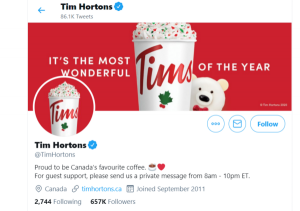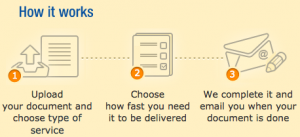Part 1: What Is The Perfect Marketing Strategy For Your Business?
(Written Monday, May 28th, 2018) – Today is Memorial Day. It’s the day we remember our fallen soldiers who have given and paid the ultimate price for our freedom and so it’s a day of remembrance, but in this post, I’d like us to remember something else.
We’re going down the road of our Perfect Marketing Strategy for business and this is part two. What we’re going to examine in this post is mining your current sales data.
On a quick note… One of the things that absolutely blew my mind over the weekend is that I actually looked up perfectmarketingstrategy.com as a domain name and it was available, and I bought it. I could not believe it, so you can review all of these episodes and download the corresponding worksheets at PerfectMarketingStrategy.com. But I digress… Let’s dig into today’s subject.
Where Have You Been?
It’s always good to have a sense of where your market is, and a lot of us have this sense, and we feel like we know what’s going on, but I think it’s a lot better to dig into the data.
You have to look back at your historical data. I use QuickBooks, but you may have a different program. It could be spreadsheets, an accountant, whatever, but you can look at what’s happening monthly, quarterly, and annually, and you should be looking at those all the time.
It’s much more powerful to understand where your business is and where it’s going when you start to map out that data.
Pricing Models
Now, let’s talk about pricing models. We’re actually going to cover that in the next episode, but I just want to lay that out right now. Today I’d like to think about four different pricing models.
First, there’s the Walmart pricing model, which has got low prices. You’re the low price leader and unless you’re Walmart, you’re never going to win that deal. They just are too big and have too much purchasing power. So, if you’re competing on price, the chances of you winning are pretty small. You may get the job, but you may lose money.
The second one is Target. Think of a Target store; it’s a little bit like an upscale Walmart. Prices here are a little bit more expensive, but there’s a little bit more service, and it’s a little nicer of a store.
Then we go to the third one, which is a Nordstrom’s. Now, Nordstrom doesn’t sell baby formula and food, but it does sell high-end service. So what you’re paying for is that high-quality product and high-end service, and obviously we’d all like to be that. There are people, though, that have returned things from years ago, and guess what — even if it wasn’t even bought at that store, Nordstrom’s often will take it back in exchange for another sale. They do everything they can to make their customers happy.
The fourth and final model you have to think about is kind of a hybrid: the Amazon model. It’s convenience and the price is right. Now everybody else is getting into that… Target.com, Walmart.com, everybody’s trying to compete against Amazon, but again, unless you’re the low price leader, you’re never gonna beat Walmart. Unless you’re the convenience leader, you’ll probably never bat Amazon.
So you have to think about this: what kind of business model are you running?
Types Of Income
Now the next thing that we wanna look at is what kind of sales do you have? I like to break this down into four categories.
Passive Income
Passive income is where you collect money on a monthly basis. It’s primarily self-serve. So people come in, they pay every single month, and you don’t have to do a lot. That’s passive income.
Recurring Income
Recurring income is a subscription. It could be a new service, and it could be something where people are paying for maintenance, they’re paying for something that’s repetitive. For me, that kind of service is my Bacon Weekly Mastermindwhere I constantly have to come up with new content every single week. So it’s a recurring subscription, but there’s still service involved in it.
One Time Sale
The next one is a one time sale. So let’s say somebody’s furnace or air conditioner breaks down, and you go in and service, or repair it. Maybe you build a website, or set up a marketing platform, or sell them insurance, whatever it is. It’s a one-time thing. You sell it, you’re done, and that’s it.
Now, you can also turn that one time into a recurring income. So for example, you could have updates with monthly maintenance. Obviously, if you have somebody on a retainer, that’s a one time with repetitive income.
Large Ticket Sale
The final one is a large ticket sale, which is a one-time big sale. This is the big kahuna: you’re doing a complete install of an entire HVAC system. You’re setting up their entire marketing system or plan. You’re getting deep. A lot of the time, these are one time sales that just happen, but you can also turn them into recurring sales.
So for example, with my high-end coaching clients, I can book them for let’s say three months or six months, but if they’re happy, a lot of them come back. It’s a big ticket item that is recurring on an ongoing basis.
Batter Up
I believe that sales and baseball have a lot in common. It requires strategy, talent, hard work, teamwork, and a bit of good old-fashioned luck!
So, think of the sales like this: passive income is a single in baseball. Recurring subscriptions is a double. One-time sales tend to be a little larger, so we’ll call them a triple, and obviously, the large ticket ones are the home runs.
Once you understand the baseball analogy, you realize that small ball wins games. Small ball means the more singles you get, the more runs you score. It’s great to have the home run, but a lot of teams live and die by it. They can hit two or three, but if the other team keeps scoring singles they win the game. So the bottom line is, built that base.
Demographics
The final thing I wanna look at is the profiles of who’s purchased your products.
Again, if you sit down and look at those four different areas, or even if you break them down to six with recurring and non-recurring on the large and one-time sales, you can actually figure out the answer to this big question: what does your customer base look like?
Now, this often changes over time. I’m going to give you five major things to examine.
Age
The first one is their age. How old are they? Are they in their 20’s or are they over 60? What you can do is sit down and actually map out what people are purchasing from you based on their age.
Gender
The next one is, are they male or female? Who is making the decisions? Not who’s paying you, but who is making the decision to make the purchase? The next one is a little touchy, but it’s good to know.
Origin
What is their race? Are they white, black, Hispanic, maybe they’re from South Asia, which is Indian, Pakistani, etc., or could be East Asian, which is Chinese, Japanese, Philippine, Koreans, and so on. It’s nice to know who is purchasing your services.
Obviously, you’re probably going to have a mix of all of the above.
Income
The next thing is their income level. Are they making less than $30,000 a year, $150,000 a year, a quarter of a million or more? You have to know what their income level is.
Employment
Then the final piece of this puzzle is, what’s their employment status? Are they employed, self-employed? Is it a dual-income household? Are they a manager or a business owner?
Final Thoughts
When you map out all that data, you want to do it for each one of those four different groups I talked about: passive, recurring, one-time, and large ticket. Then you’ll start to get a sense of who’s buying what. That’s going to give you a good solid foundation for where you can start to grow your business because now you understand the history of where you’ve been. So this information will not necessarily predict when you add a new service or change things, or what’s it’s going be like, but at least you have an understanding of where your business has been. Once you know where you’ve been, it’s a heck of a lot easier to see where you’re going.
I would love to hear your thoughts on this. Comment below and share your thoughts, ideas or questions about showing the concepts presented. Have you had to overcome any of the presented concepts? What worked and what did not live up to expectations? Do you have any ideas or advice you could share?
To learn more about this and other topics on Internet Marketing, visit our podcast website at http://www.baconpodcast.com/podcasts/
First published on linkedin.com
Digital & Social Articles on Business 2 Community
(44)













